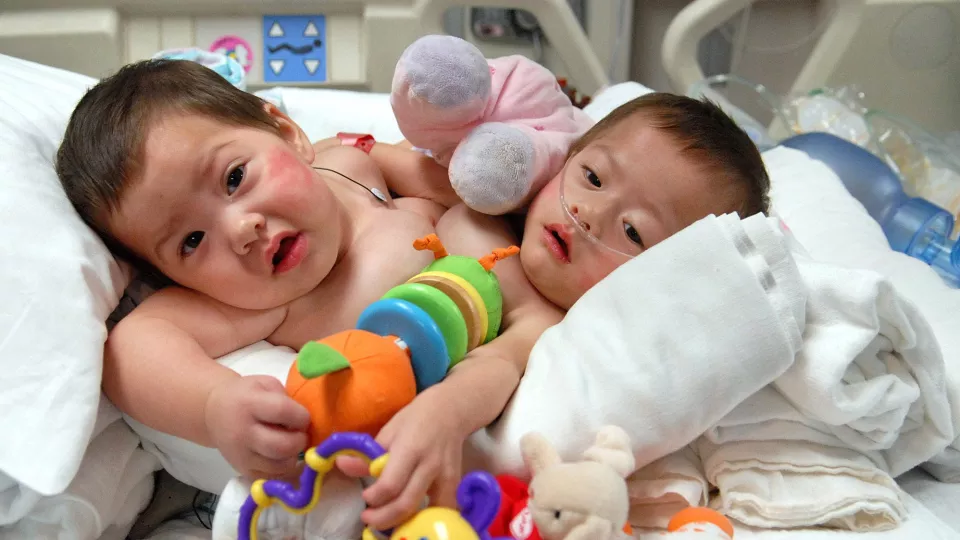
Ischiopagus Tetrapus Twins
Regina and Renata were diagnosed as ischiopagus tetrapus twins. This is one of the rarest and most complex conjoinments upon which to perform separation surgery, as it involves joining of so many complex organs and systems.
On June 14, 2006, a team of nearly 80 medical staff, including general, orthopaedic and plastic surgeons, anesthesiologists and nurses, as well as other caregivers and specialists, successfully separated conjoined twins in a 22-hour surgery. The patients, Regina and Renata Salinas Fierros, were ischiopagus twins, joined at the mid-abdomen and pelvis, facing one another.
The care timeline at our hospital began the day after their birth until after their post-surgical care was complete. Regina and Renata were transferred to the Center for Newborn and Infant Critical Care at our hospital the day after their birth, when physicians initiated a set of carefully planned procedures over the next year to prepare for the twins' separation procedure. Diagnostic procedures and medical procedures included the insertion of "tissue expanders" to add skin and soft tissue that would be able to close open wounds after the separation surgery.
The 22-hour surgery required a fifteen-person surgical team, with more than 80 caregivers involved. At approximately one year old, Regina and Renata were considered the ideal age to undergo the surgery. "Tissues and bones at this age tend to be both firm and pliable enough and also of a reasonable size to manipulate them easily," according to Dr. Stein. If the surgery were not performed, the twins’ anatomy would begin to limit their quality of life over time, taking away their individuality, their ability to walk and to develop normally. There are also psychosocial issues of separation and identity involved in separating conjoined twins more than one year old.
